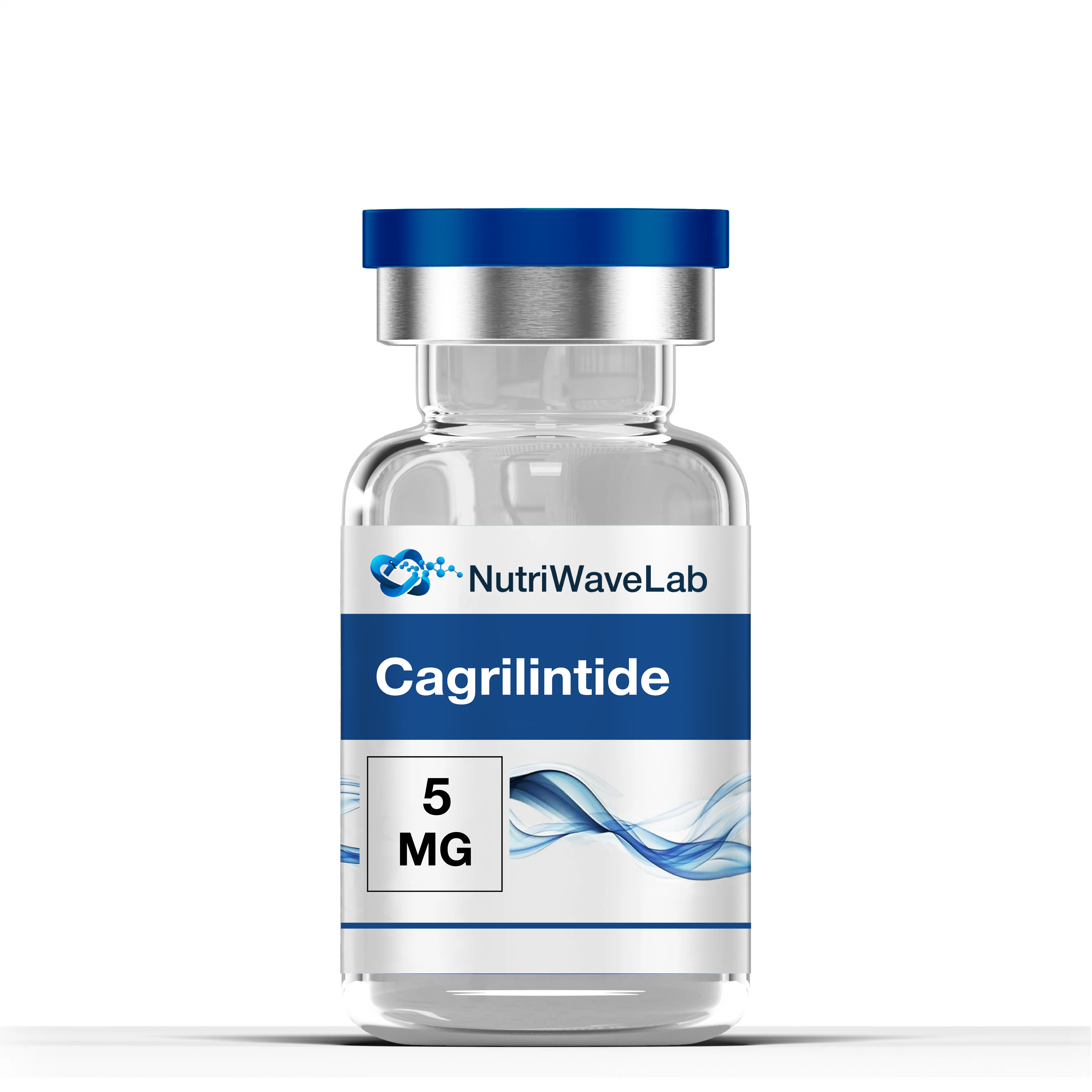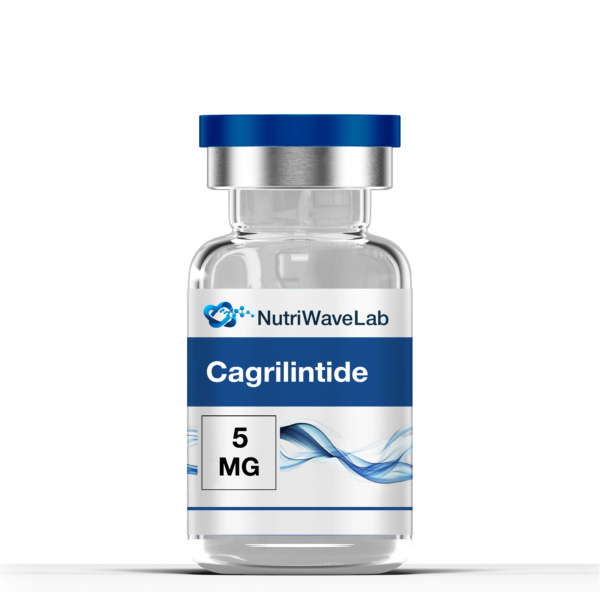Cagrilintide 5mg
$0.00
- when buying 5 units of goods 5% discount
- when buying 10 units of goods 8% discount
11 in stock
Cagrilintide — Advanced Amylin Analogue for Research in Weight Regulation and Metabolic Health
Chemical and Biochemical Characteristics
-
Amino Acid Sequence: Ala-Thr-Val-Gln-Asn-Asn-Thr-Phe-Leu-Ser-Ser-Asn-Ser-Gly-Pro-Gln-Gly-Thr-Pro-Leu-Thr-Asn-Leu-Asp-Gly-Gly-Gln-Ala-Leu-Thr-Leu-Val-Gly-Ser-Asn-Leu-Ser-Asn-Val-Leu-Ser-Ser-Leu-Ala-Thr-Thr-Thr-Ser-Asn-Leu-Ser-Ala-Gly-Ala-Thr-Gly-Thr-Val-Gly-Thr-Gly-Thr-Thr-Ser-Asn-Thr-Gly-Thr-Leu-Gly-Thr-Ala-Thr-Thr-Thr-Gly-Thr-Thr-Thr-Thr-Gly-Thr-Thr-Thr-Thr-NH₂
(based on Novo Nordisk published peptide data) -
Molecular Formula: C₃₀₇H₄₉₅N₉₁O₉₃
-
Molecular Weight: ≈ 6920 g/mol
-
CAS Number: 1392647-56-1
-
PubChem CID: 155908550
-
Compound Class: Amylin analogue / amylin receptor agonist
-
Chemical Family: Modified peptide (amide-stabilized, proline-substituted to resist enzymatic degradation)
-
Developer: Novo Nordisk A/S (Denmark)
Cagrilintide is a long-acting synthetic analogue of human amylin, designed for enhanced stability, receptor affinity, and prolonged pharmacokinetics compared to native amylin.
Overview
Cagrilintide is a next-generation amylin analogue under investigation as a novel peptide for body-weight regulation and metabolic research.
Amylin is a naturally occurring hormone co-secreted with insulin by pancreatic β-cells. It helps regulate satiety, gastric emptying, and caloric intake through both homeostatic and hedonic brain circuits.
Cagrilintide demonstrates strong anorexigenic and metabolic effects, making it one of the most promising peptides for studying mechanisms of obesity, appetite control, and energy balance.
Mechanism of Action
Cagrilintide acts on amylin receptors (AMYRs) — heterodimers formed by calcitonin receptor (CTR) and receptor activity-modifying proteins (RAMPs).
These receptors are expressed in regions of the brain involved in hunger and reward regulation, such as the hypothalamus, brainstem, and insula.
Its key biological actions include:
-
Enhancing satiety and reducing meal frequency;
-
Delaying gastric emptying, prolonging post-meal fullness;
-
Decreasing caloric intake and modulating reward-driven eating;
-
Stabilizing energy balance to prevent weight regain after caloric restriction.
Through these pathways, Cagrilintide contributes to sustained appetite suppression and improved metabolic efficiency.
Cagrilintide in Combination with GLP-1 Receptor Agonists
The most exciting aspect of Cagrilintide research lies in its synergy with GLP-1 receptor agonists such as Semaglutide and Tirzepatide.
These peptides act via complementary mechanisms on both metabolic and neurobehavioral levels.
GLP-1 Agonist Mechanisms
-
Activate GLP-1 receptors in the hypothalamus;
-
Enhance insulin secretion and suppress glucagon release;
-
Slow gastric emptying and reduce appetite;
-
Decrease cravings for high-calorie foods.
Cagrilintide’s Complementary Role
-
Amplifies satiety signaling via amylin pathways;
-
Modulates dopaminergic reward circuits, reducing hedonic hunger;
-
Addresses behavioral overeating linked to stress or habit;
-
Prolongs weight-loss maintenance after caloric reduction.
Clinical phase-2 studies demonstrated that Cagrilintide + Semaglutide leads to significantly greater and more durable weight loss than either compound alone, supporting a combined amylin-GLP-1 approach for future obesity research.
Potential Research Applications
Current research explores Cagrilintide’s potential across multiple metabolic and neuroendocrine domains:
-
Obesity and overweight management
-
Metabolic syndrome and insulin resistance
-
Multi-peptide combinations (Amylin + GLP-1)
-
Central appetite and reward regulation studies
-
Long-term weight maintenance and metabolic adaptation
Such studies aim to unravel the multi-hormonal control of energy homeostasis and to advance the development of next-generation peptide therapies for metabolic health.
Summary
Cagrilintide represents a new generation of stable amylin analogues with broad research potential in:
-
Appetite and satiety regulation
-
Neuroendocrine control of feeding behavior
-
Energy expenditure and weight maintenance
-
Cross-talk between insulin, GLP-1, and amylin pathways
-
Long-term metabolic adaptation and obesity resistance
When combined with GLP-1 receptor agonists like Semaglutide or Tirzepatide, Cagrilintide produces a synergistic reduction in body weight and represents one of the most promising frameworks for multi-hormonal obesity research.
Selected References
-
Lau J. et al. Cagrilintide: a novel amylin analogue for the treatment of obesity. Nature Metabolism, 2021 (3): 1521 – 1530. PubMed: 34887567
-
Blundell J., Finlayson G. Amylin, satiety, and obesity: an update on mechanisms and clinical findings. Frontiers in Endocrinology, 2022 (13): 937641. PubMed: 36313228
-
Wadden T.A., Bailey T.S. Combination of Cagrilintide and Semaglutide in Obesity Management: Insights from Phase 2 Trials. The Lancet, 2023 (402): 1159 – 1172. PubMed: 37508677
-
Novo Nordisk. Clinical development of Cagrilintide in combination with GLP-1 receptor agonists for chronic weight management. ClinicalTrials.gov, Identifier NCT04982575.
Product Use: THIS PRODUCT IS STRICTLY FOR SCIENTIFIC RESEARCH PURPOSES ONLY. It should only be used in laboratory settings. All product information on this website is provided solely for educational purposes. The law strictly prohibits introducing this product into the body of humans or animals. Only licensed professionals should handle this product. This product is not a drug, food, or cosmetic and should not be improperly classified or used as such.



Reviews
Clear filtersThere are no reviews yet.